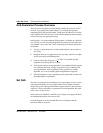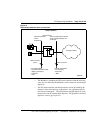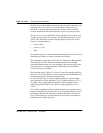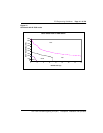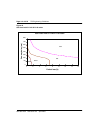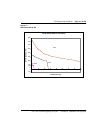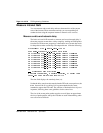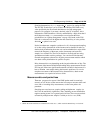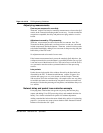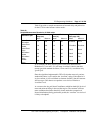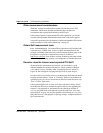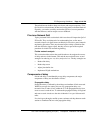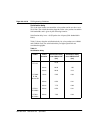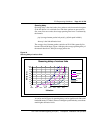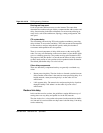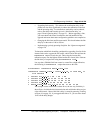
Page 116 of
378
ITG Engineering Guidelines
553-3001-202 Standard 1.00 April 2000
Adjust ping measurements
One-wa
y
as compared to roundtrip
The statistics are based on round trip measurements, whereas the QoS
metrics in the Transmission Rating model are one-way. In order to make the
comparison compatible, the delay and packet error ping statistics are to be
halved.
Ad
j
ustment caused b
y
ITG processin
g
The measurements are taken from host to host. The
Transmission Rating QoS metrics are from end user to end user, and would
include components outside the intranet. The statistic for delay needs
to be further modified by adding 93 ms to account for the processing and jitter
buffer delay of the ITG nodes.
No adjustment needs to be made for error rates.
If the intranet measurement barely meets the round trip QoS objectives, the
craftsperson needs to be aware that there is a possibility that the one-way QoS
is not met in one of the direction of flow. This can be true even if the flow is
on a symmetric route due to the asymmetric behavior of data processing
services.
Late packets
Packets that arrived outside of the window allowed by the jitter buffer are
discarded by the ITG. To determine which samples to ignore, first
calculate the average one-way delay based on all the samples. Then add
500 ms to that. This is the maximum delay. All samples whose one-way delay
exceed this maximum are considered as late packets and are removed from
the sample. Calculate the percentage of late packets, and add that to the packet
loss statistic.
Network delay and packet loss evaluation example
From ping data, calculate the average one-way delay (halved from ping
output, and adding 93 ms ITG processing delay) and standard deviation for
latency. Do a similar calculation for packet loss without adjustment.
Adding a standard deviation to the mean of both delay and loss is for planning
purposes. A customer may want to know whether traffic fluctuation in their
Intranet will reduce the user’s QoS.



